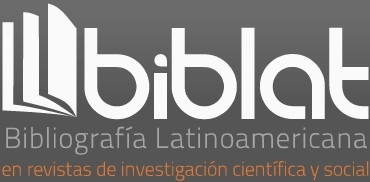The religious subject and intersubjectivity
DOI:
https://doi.org/10.35494/topsem.2019.1.41.599Keywords:
subject, subjectivity, religionAbstract
The religious subject is defined and specified by the singular
sphere of action he performs, and which is basically to re-link
himself to the divine and to fellow man. Other actions are diversifying:
one of them, for example, is to transform the enunciative
field. From this field of egocentric character, a subject
“the self” —as a form, deixis and incarnation of the speaking
subject (preaching-assertion)— defines and controls a field in
which “the self” is precisely the center itself. The egocentric
field is characteristic of many of the natural languages, as well
as of thought, in the West. However, there are other languages
and other long-standing ways of thinking about and conceiving
the world; in short, other significant practices and ways of life
in which the center is not placed on the subject-self, but in
the subject-other and particularly in the subject-you, who thus
constitute an altered-central field, which is the foundation, for
example, of ethics, democracy and of various instituted religions
—one of which will be the principle basis for this work. Now,
that subject-self, charged with subjectivity (of interests, desires
and own affections), by placing the emphasis on the “other” or on
the “you”, not on one’s own subjectivity, but on the other’s —and
taking the subjectivity of the other as its own—, establishes a
full intersubjective relationship.
Downloads
References
AMELA, Víctor (11 de septiembre 2009). “Entrevista a Moussa ag Assarid, Pastor y estudiante Tuareg”. Fondo para la Comunicación y la Educación Ambiental, A.C. Disponible en: https://agua.org.mx/biblioteca/entrevista-a-moussa-ag-assarid-pastor-y-estudiantetuareg/
ANZIEU, Didier (2002). El yo piel. Madrid: Biblioteca Nueva.
ASTINGTON, Janet Wilde & BAIRD, Jodie (2005). Why language matters for theory of mind. Oxford: Oxford University Press.
BENVENISTE, Émile (2007). Problemas de lingüística general I. México: Siglo XXI.
BUBER, Martín (2005). Yo y tú. Madrid: Caparrós.
COQUET, Jean-Claude (1984). Le discours et son sujet I. Essai de la grammaire modale. París : Klincksieck.
DORRA, Raúl (2018). “Pregunta por el sujeto”. Tópicos del Seminario. Revista de Semiótica. Del sujeto y la subjetividad I, núm. 40, pp. 11-33.
EICHER, Peter (1989). Diccionario de conceptos teológicos. Madrid: Herder.
GREIMAS, Algirdas Julien y COURTÉS, Joseph (1990). Semiótica. Diccionario razonado de la teoría del lenguaje I. Madrid: Gredos.
___________ y FONTANILLE, Jacques (2002). Semiótica de las pasiones. De los estados de cosas a los estados del alma. México: Siglo XXI.
HAN, Byung-chul (2016). Topología de la violencia. Barcelona: Herder.
HUSSERL, Edmund (1992). Invitación a la fenomenología. Barcelona: Paidós.
___________ (2004). Meditaciones cartesianas. México: FCE.
KANT, Immanuel (2003). Crítica de la razón pura. Buenos Aires: Losada.
LÉVINAS, Emmanuel (2005). Humanismo del otro hombre. México: Siglo XXI.
RÁBADE, Sergio (1995). Teoría del conocimiento. Madrid: Akal.
REYNOSO, Carlos (2017). Lenguaje y pensamiento: tácticas y estrategias del relativismo lingüístico. Disponible en: https://etnolinguisticablog.files.wordpress.com/2017/04/carlos-reynoso-relativismolinguistico.pdf
RUIZ, Iván y SOLÍS ZEPEDA, María Luisa (eds.) (2012). La esquicia creadora. México: BUAP/SeS/17, Instituto de Estudios Críticos, col. Estudios Semióticos, 4.
RUIZ MORENO, Luisa y SOLÍS ZEPEDA, María Luisa (eds.)
(2008). Encajes discursivos. Estudios semióticos. México: BUAP/SeS/Educación y Cultura.
Downloads
Published
How to Cite
Issue
Section
License

Tópicos del Seminario is licensed under a Creative Commons Reconocimiento-NoComercial-CompartirIgual 4.0 Internacional License.














